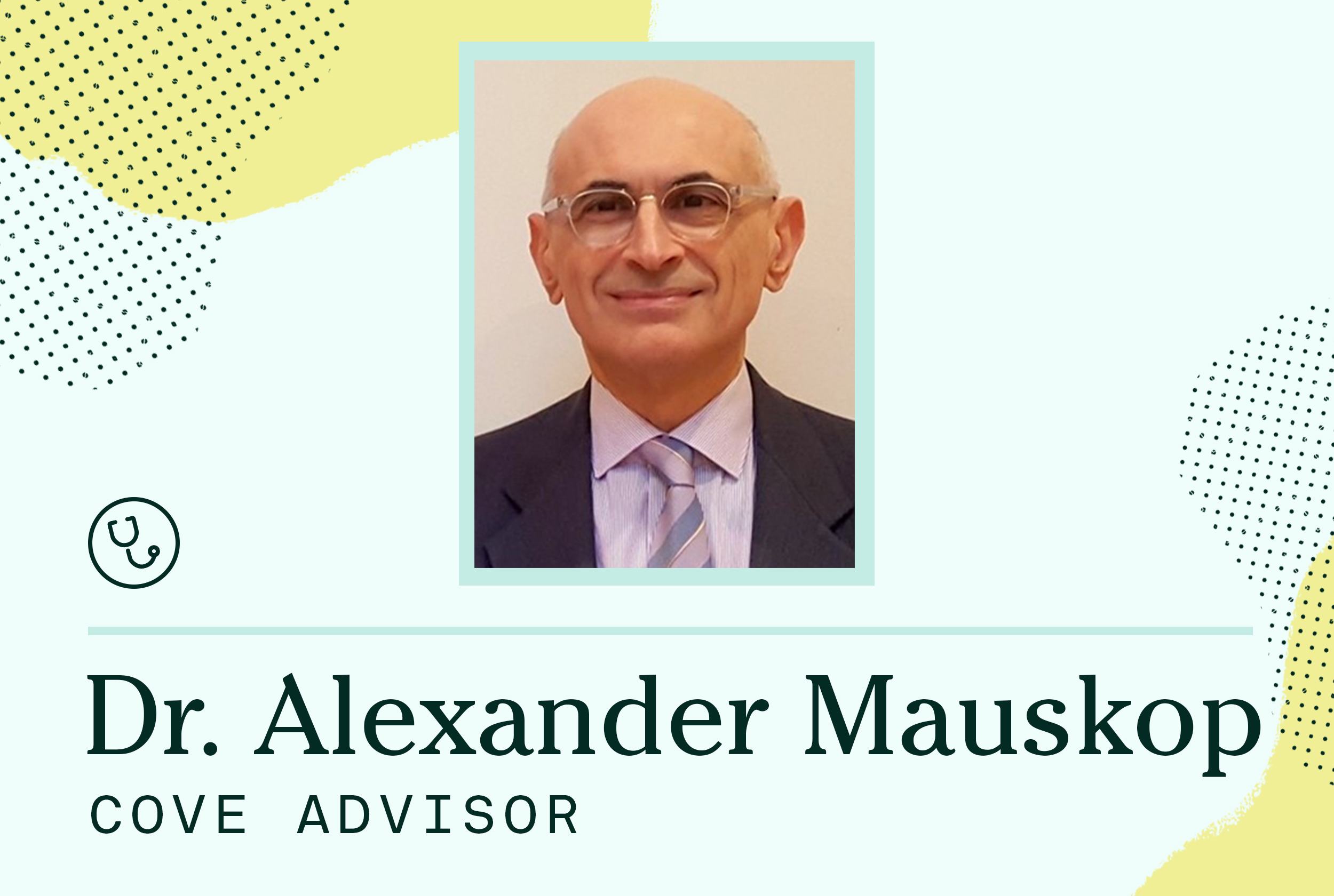“We feel your pain,” is one of the first things Dr. Alexander Mauskop tells us when we ask him to share his go-to interesting migraine fact.
He goes on to explain, “Lifetime prevalence of migraine for female neurologists is 63% and 47% for male neurologists. Among headache specialists, the lifetime prevalence is 82% for women and 72% for men.”
While this fact is interesting on its own, it speaks a lot to Dr. Mauskop that it’s his favorite fact. He’s one of the world’s leading headache specialists, the director and founder of the New York Headache Center, and a Professor of Clinical Neurology at SUNY Downstate Medical Center. While those qualifications might make some doctors lose sight of the patient, it’s only made Dr. Mauskop even more empathetic.
His drive to help as many migraine sufferers as possible is what led him to becoming a Cove medical advisor. Here’s a little bit more about him, in his own words.
What's your educational background?
I went to medical school at Uzhgorod National University in Ukraine, completed my Neurology residency at SUNY Downstate Medical Center, followed by a Pain Fellowship at the Memorial Sloan-Kettering Cancer Center.
How did you get into treating migraine?
After my pain fellowship, I was recruited to work at a major hospital where pain specialists—who are typically are anesthesiologists—had no interest in headaches, so it fell to me to take care of migraine and other types of headaches.
What's the most interesting migraine fact?
Lifetime prevalence of migraine for female neurologists is 63% and 47% for male neurologists. Among headache specialists, the lifetime prevalence is 82% for women and 72% for men. All of that is to say that we feel your pain!
What's the most common migraine question you hear from patients?
“How can I cure my migraine?”
How do you respond?
Unfortunately, we do not have a cure for migraine headaches, but the good news is that migraine is not a permanent condition. It often comes and goes out of a person's life without an obvious cause.
Menopause often brings relief to women and even men tend to have fewer attacks as they get older. While there isn’t currently a cure, the vast majority of migraine sufferers can obtain very good relief with exercise, by correcting vitamin and mineral deficiencies, managing stress, and other non-drug treatments.
If that is not sufficient, we use a variety of new and old medications, Botox® injections, and other treatments.
What advice would you give someone who's experiencing migraine headaches?
You do not need to suffer—almost everyone can be helped with a variety of non-drug approaches and with dozens of effective medications.
The information provided in this article is not a substitute for professional medical advice, diagnosis, or treatment. You should not rely upon the content provided in this article for specific medical advice. If you have any questions or concerns, please talk to your doctor.


